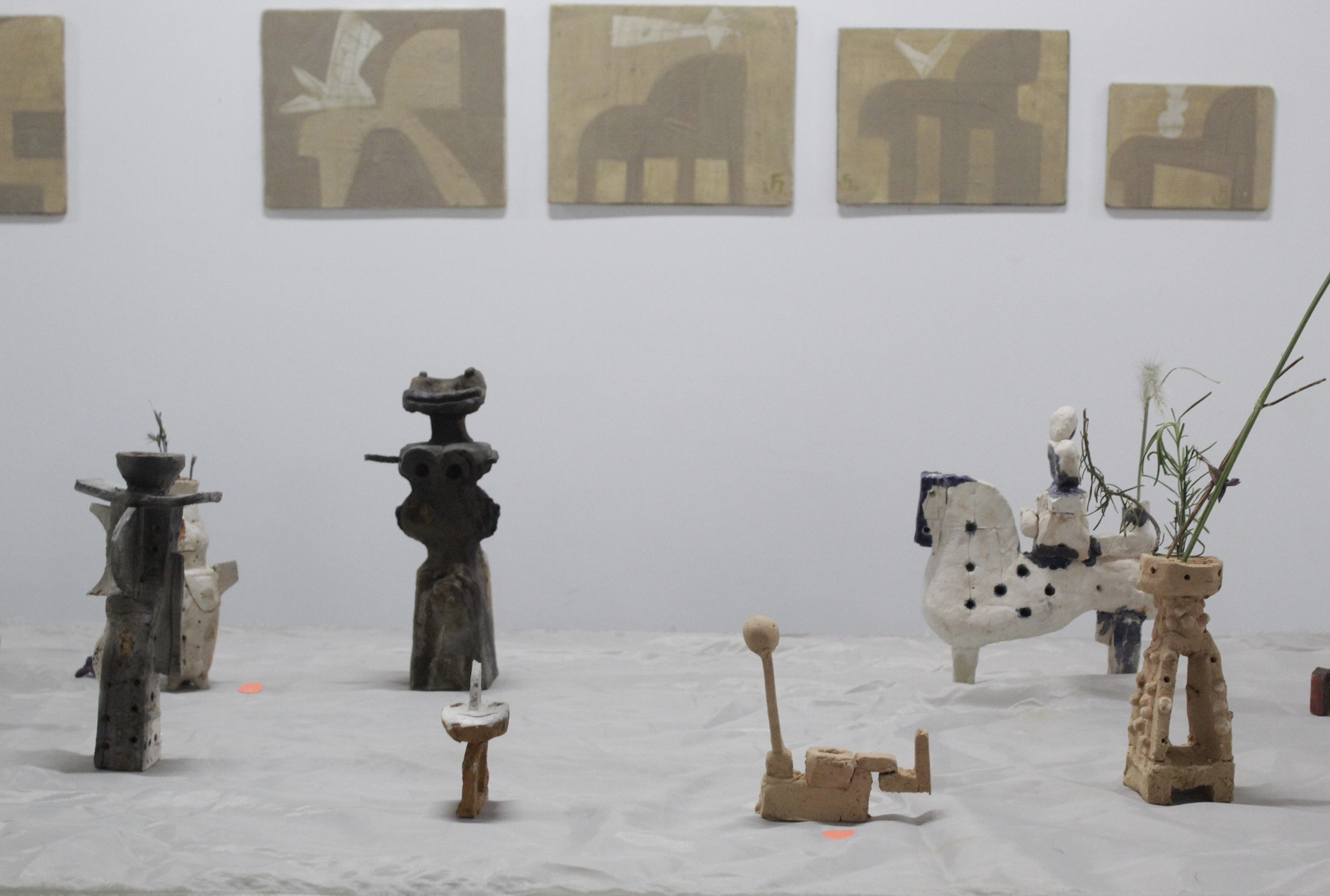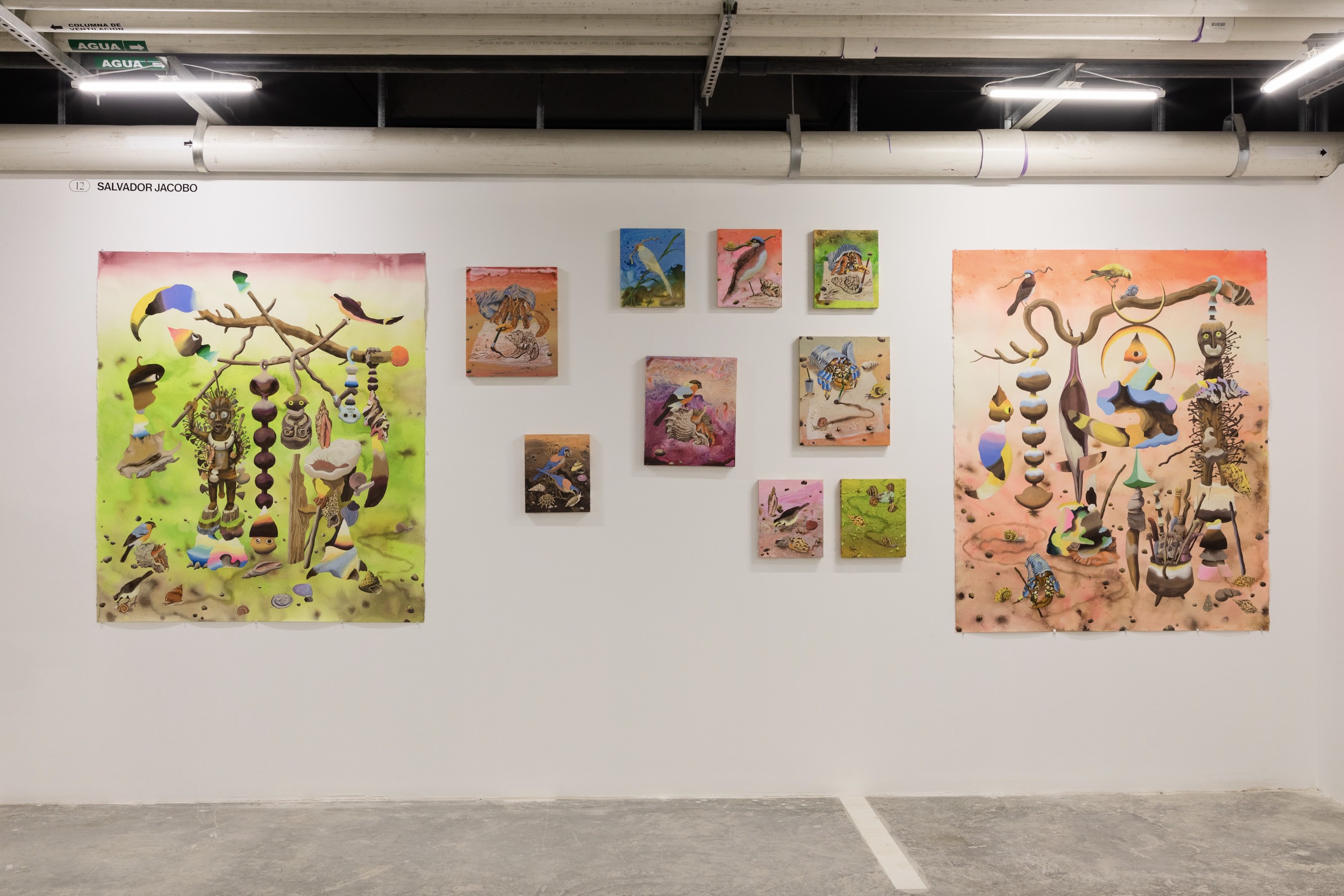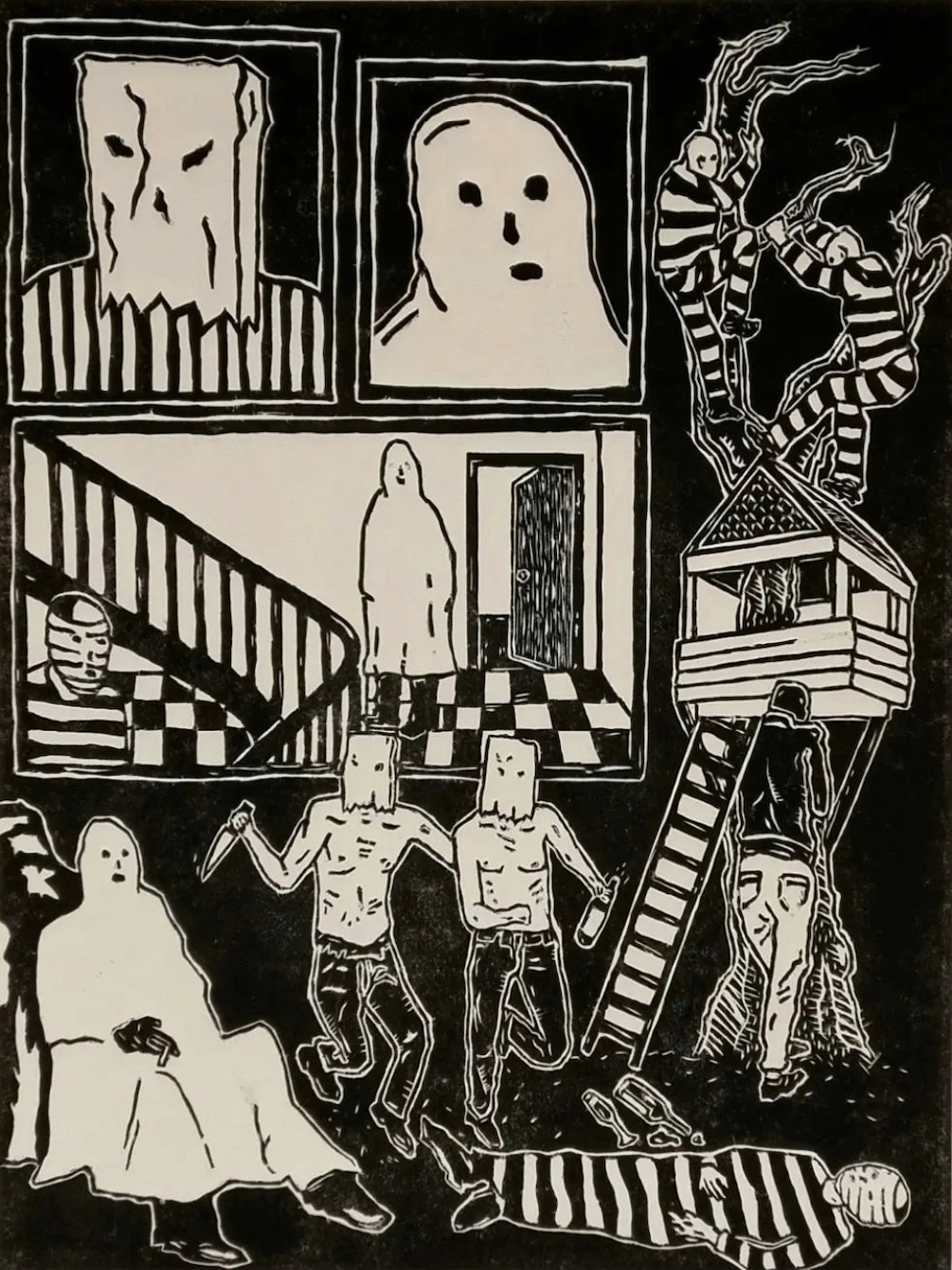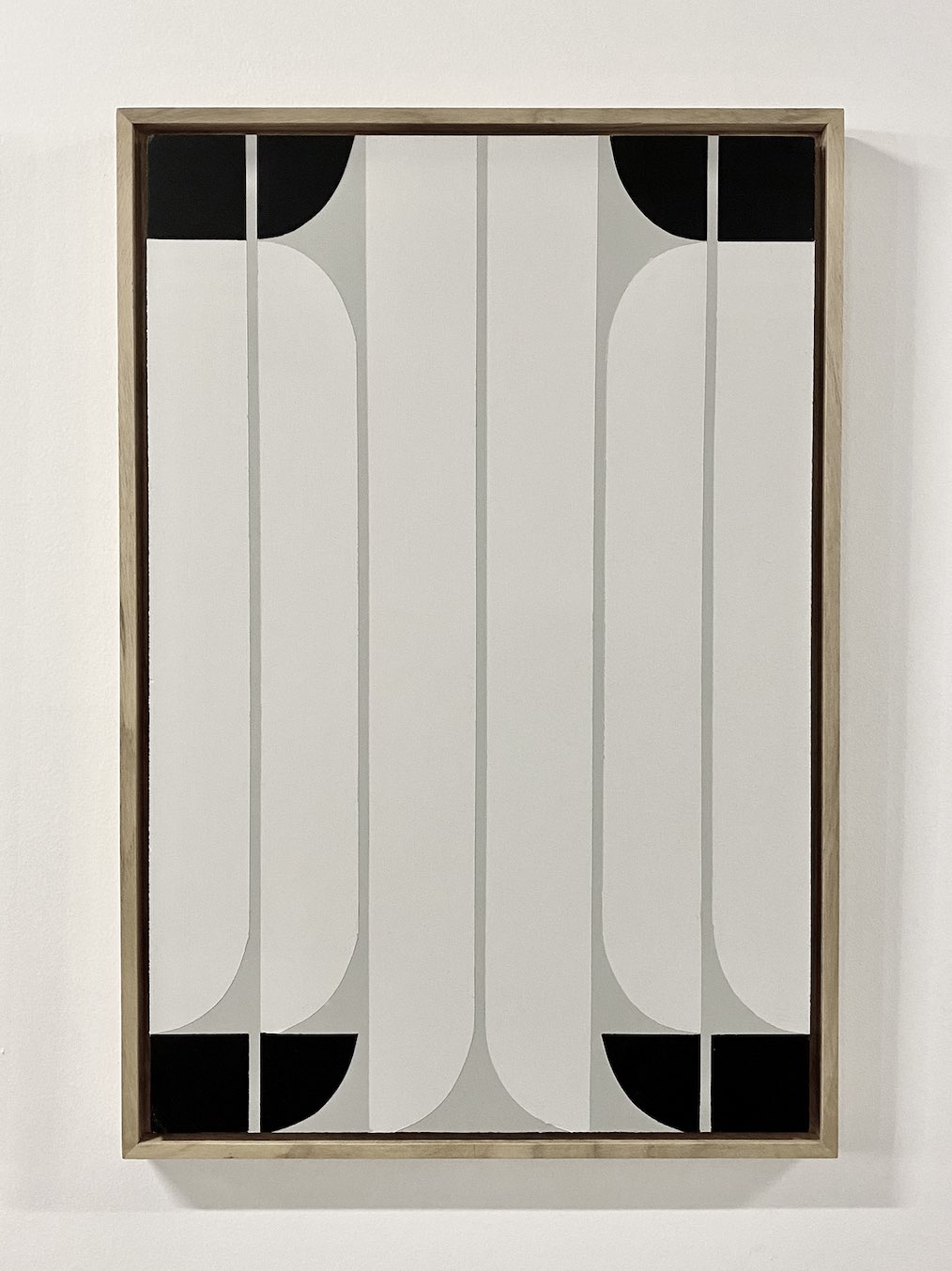
Interview
FAMA: the sensation of setting up an art fair. Sofía Ortiz interviews Salvador Jacobo, Tiziania Garza Galán and Federico Jordán
by Sofía Ortiz
Reading time
7 min
I’m crouching down, scanning the shelves of my bookcase. I’m looking for a book: Cuestionario de Proust: edición celebridades (Proust Questionnaire: Celebrity Edition), which I’m not sure survived my Marie Kondo fury during my last move. I finally locate it under a giant book by Saudek; the cover is damaged but the questions inside hold up. Suffice it to say that Proust answered them 150 years ago. I recalled this book while thinking about the problems of interviewing artists for this edition of the Contemporary Art Fair (FAMA), between the time on my back and the 910 kilometers separating Mexico City from Monterrey. What better crutch for a writer in a hurry than a ready-made questionnaire! Thus Salvador Jacobo, Tiziania Garza Galán, and Federico Jordán received this series of questions along with apologies for the rush.
What do you listen to while you work?
Federico Jordán: Sacred music, especially Jordi Savall. I also listen to the radio station KCRW Eclectic 24.
Tiziana Garza Galán: Lately I’ve been listening to audiobooks; I’m currently listening to one called Cultish: The Language of Fanaticism. When I play music I usually listen to: Sonic Youth, Patti Smith, My Bloody Valentine, Black Flag, Interpol (the album Turn On The Bright Lights is one of my favorites), Massive Attack, PJ Harvey, The National, The Velvet Underground, and Taylor Swift.
Salvador Jacobo: Lately I’ve listened to a lot of Nick Cave and the Bad Seeds. Also Baobab Orchestra, Los viejos, Talking Heads… I listen to a wide variety of things and they change depending on my mood, I guess.
What do you consider the most overrated virtue?
FJ: Immediately answering the phone and WhatsApp messages.
TG: Faith.
SJ: Talent.
What is hardest for you or makes you most nervous about an art fair?
FJ: Filling out forms, sending paperwork.
TG: Setting up and talking.
SJ: Talking to people; perhaps, explaining my work. Although I’m clear about its meaning, it’s difficult for me to put it in words. But above all it’s hard for me to talk to people who aren’t really interested in what they’re going to see, those who are only going to take photos for Instagram.

What artists do you admire?
FJ: Kiefer, Torres-García, Baselitz, Steinberg.
TG: Raymond Pettibon, Patti Smith, Jenny Holzer, Warhol.
SJ: A lot… it’s like with music, over time I change my taste in artists. Lately I’ve been checking out a lot of Philip Guston and Jimmie Durham. But also colleagues who are currently creating things that interest me, people of my generation like Alejandra Venegas, Lucía Vidales, Roberto Carrillo, Apolo Cacho, Eme de Armario, the collective Yope Projects, to name a few. I think that in Mexico there are many people doing very interesting things and that in some way have influenced my work.
What excites you most about FAMA?
FJ: Selling.
TG: Seeing things and listening to people.
SJ: Getting to know other artists.
What is your current mood?
FJ: I’m sad.
TG: ngbiufgnhufheiurfgewrrg.
SJ: Stressed, overwhelmed.
Here, a brief pause in order to admit that my current mood is raging. Preparing work for the fair involves going out for cardboard, oilcloth, and bubble wrap. You arrive at your studio and realize that you’ve forgotten the adhesive tape. There’s nowhere to park in front of FedEx, so you stop around the corner. As you carry your boxes and drag them around, you’re being watched by pedestrians interested in the comedy of a sweaty person. There are emails that you forgot to answer, you feel anxiety as soon as you receive private messages on WhatsApp: “I’m asking a lot of you”… Zooms you didn’t enter, posts you made on social media with captions you’ve come to regret. You board the plane and watch a priest dressed in a long robe, in the style of a traveling phantom, float down the aisle. But, hey, we’re going to Monterrey!

What’s Monterrey like?
FJ: I live in Saltillo, my friends live in Monterrey. I like San Pedro better.
TG: Problematic but OK.
SJ: Like a great Hot-Wheels highway surrounded by mountains and without water.
What do you consider essential in your workplace?
FJ: My privacy.
TG: Music and light.
SJ: I guess that a certain chaos is essential. When I’m like I’m now with too much work, my studio is almost like a garbage dump, everywhere there are things thrown about, sheets, notebooks, bins, paint, cans, etc. There comes a time when I have to put a certain order and cleanliness; it usually happens when I start a new painting.
How do you describe your work when your friend’s aunt asks you about it?
FJ: I don’t answer.
TG: They’re like little stamps, but more complicated.
SJ: It’s like a game of combinations of objects and shapes that are strange or twisted.
We’re setting up in the basement of the Arboleda shopping center, in San Pedro Garza García. It’s difficult to calculate the time, owing to the lack of natural light; you’ve got to go down several escalators and cross a tunnel of blue light in order to arrive there. I don’t have a cutter or wall anchors, but my friend Emilio Flores rescues me by offering me help in installing. People look at their booths from afar; suddenly they approach and unfold a tape measure from their pocket in a fluid movement, just like cowboys in the Old West, in order to adjust a centimeter or so. I end up with white knees, with white paint particles displaced by drills, hungry and tired, but at peace with the result.

What talent would you most like to have?
FJ: I’m fine.
TG: Making music and running.
SJ: Playing music and reading minds.
What do you regard as the lowest depth of misery?
FJ: Thinking about the absence of God.
TG: FOMO.
SJ: Lack of empathy, I guess. Not knowing how to recognize others as equals. I think that’s how we get problems like racism, classism, machismo, aporophobia.
What do you like most about your job?
FJ: Being surprised by finding the poetics of certain things.
TG: I like that there’s a lot to learn, either technically or about myself. I like the element of surprise of the diagram: that sometimes things don’t turn out the way you expect.
SJ: I like everything, I really enjoy drawing and doing it without restrictions. A lot of the time painting and drawing also bring anxiety, but even I prefer that anxiety to sitting at a desk doing paperwork, in a 2 by 2 meter office. I simply couldn’t handle it. So, even though sometimes things don’t go my way or I feel discouraged, I prefer continuing to paint and doing it with maximum energy than to doing any other boring thing.
What’s it like to be an artist in Mexico?
FJ: The same as in other places, but different.
TG: It makes me nervous.
SJ: It’s complex, since it implies a maximum effort that’s sometimes not rewarded. Sometimes it also means being ignored, underestimated, put aside, but I guess it depends on the kind of artist you are. It almost always involves a fight.
The fair begins. I feel like how I was as a kid, waiting for the popcorn to start popping. The murmur of voices slowly grows. An antiquated drill buzzes in the background. I don’t think anyone is going to come up to talk to me if I have my computer on—or is it that I have to approach them? Another artist tells me that you have to measure out the energy, that it’s a marathon and not a sprint. My wall partner, Andrea Sotelo, talks to me about her work: abstractions of vulvas. We both agree that our work looks nice together. I realize that what most excites me about this fair is expanding community networks. Bring it on, FAMA!
Translated to English by Byron Davies

Cover picture: Booth by Sofía Ortiz at FAMA 2022. Photo: Michelle Lartigue
Published on October 22 2022